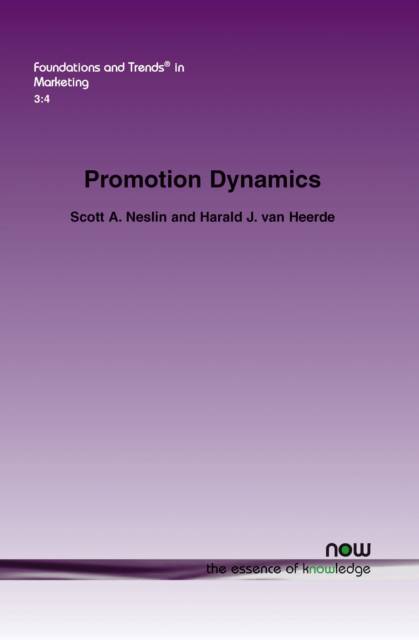
- Afhalen na 1 uur in een winkel met voorraad
- Gratis thuislevering in België vanaf € 30
- Ruim aanbod met 7 miljoen producten
- Afhalen na 1 uur in een winkel met voorraad
- Gratis thuislevering in België vanaf € 30
- Ruim aanbod met 7 miljoen producten
Zoeken
Omschrijving
Presents a comprehensive overview of the various dynamic effects of promotions. To keep the discussion centred on a common theme, the authors focus in particular on the dynamic effects of price promotions (rather than non-price promotions) offered to consumers (rather than to the trade or to sales force).
Specificaties
Betrokkenen
- Auteur(s):
- Uitgeverij:
Inhoud
- Aantal bladzijden:
- 108
- Reeks:
Eigenschappen
- Productcode (EAN):
- 9781601982803
- Verschijningsdatum:
- 11/11/2009
- Uitvoering:
- Paperback
- Afmetingen:
- 157 mm x 234 mm
- Gewicht:
- 166 g

Alleen bij Standaard Boekhandel
+ 181 punten op je klantenkaart van Standaard Boekhandel
Beoordelingen
We publiceren alleen reviews die voldoen aan de voorwaarden voor reviews. Bekijk onze voorwaarden voor reviews.








